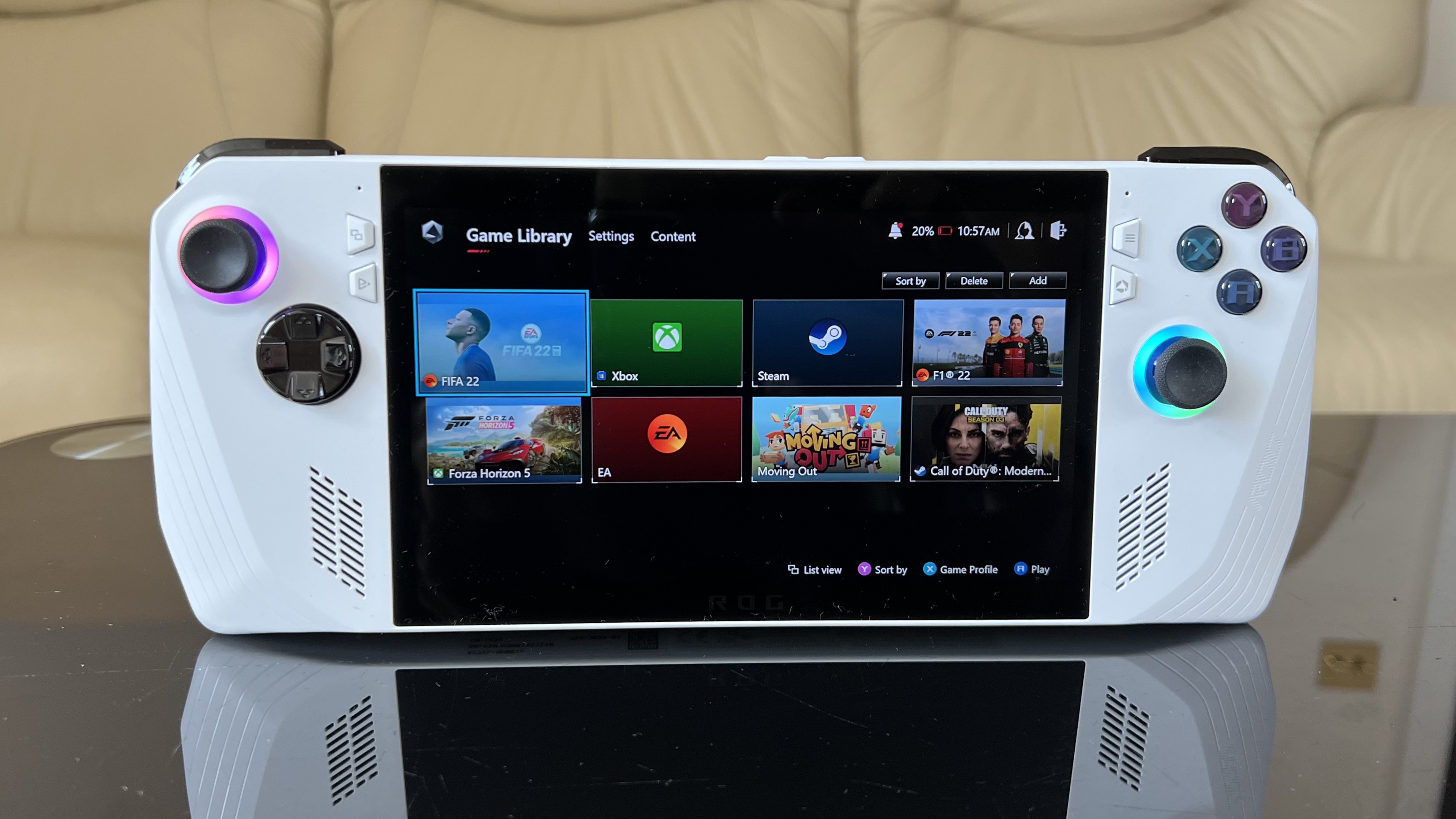
 Image: Foundry
Image: Foundry
The Steam Deck is a huge hit for PC gamers, and it was inevitable that competition would pop up. Devices like the Asus ROG Ally, the Lenovo Legion Go, and the MSI Claw all try to deliver a similar experience…with one big difference. These Windows-powered alternatives have had a few months to stew, and while Adam Patrick Murray likes some of them, PCWorld contributor Will Smith isn’t impressed.
Asus ROG Ally
 Read our reviewPrice When Reviewed:From $599.99 | Model reviewed $699.99Best Prices Today:$599.99 at Asus | $699.99 at Best Buy
Read our reviewPrice When Reviewed:From $599.99 | Model reviewed $699.99Best Prices Today:$599.99 at Asus | $699.99 at Best Buy
Will is a big handheld fan who pre-ordered the Steam Deck day one. And while the Linux-based Steam OS isn’t perfect — notably having compatibility issues with a few big titles like Fortnite — he’ll take it any day over Windows-based machines and their janky interfaces. It’s an opinion shared by people like GiantBomb’s Jeff Grubb (a friend of our Full Nerd podcast).
Even some of these machines’ signature differences versus the Steam Deck, like high-resolution, high-refresh screens or LED lighting, are things that are extraneous for PCs in this handheld form factor, where battery life is at a premium and 40 frames per second is good enough.
But it’s the various third-party attempts to compete with Steam’s Big Picture Mode and its adaptations for the smaller Steam Deck that are the real deal-killers. “It’s trash fire city,” says Will. Lenovo’s Legion Go is particularly bad, but all of them lack polish — for most games it’s just easier to load up the Windows version of Steam and use that instead.
“This isn’t on the vendors, this is on Microsoft for not fulfilling this need,” Will comments. “This is something the Xbox app on the devices should be able to fulfill.” So yeah, a lot of this is on the device makers trying to out-do Valve and failing. But you could also say that Microsoft, as the steward of Windows as a gaming platform, is failing even harder. All the “home” button on these things should be user-addressable, instead of going to whatever custom handheld interface is being used.
There are some high points. All of these devices shine for streaming, either via a service like GeForce Now or from a primary gaming machine over Wi-Fi (though that does mean they don’t stand on their own merits). Graphics and refresh rates are better if you’re leaning on remote hardware, obviously.
But for the most part, it seems like the Steam Deck is still far and away the best option in this new category it more or less invented. For more deep dives on PC gaming, be sure to subscribe to PCWorld on YouTube.
Author: Michael Crider, Staff Writer

Michael is a former graphic designer who’s been building and tweaking desktop computers for longer than he cares to admit. His interests include folk music, football, science fiction, and salsa verde, in no particular order.
Recent stories by Michael Crider:
Nvidia makes GeForce Now easier to run on the Steam DeckMSI Claw claims up to 40% performance boost with new driver, BIOSAcer’s new Helios and Nitro gaming laptops pack all the latest chips



